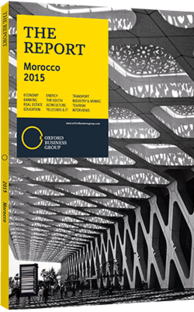Morocco expands use of fertilisers in agriculture
Demand for fertilisers has increased in recent years, prompted by the ambitious Green Morocco Plan (Plan Maroc Vert, PMV) strategy to develop and modernise Moroccan agriculture. Chief among the PMV’s objectives is the target to bring annual fertiliser consumption up from its current 900,000 tonnes to 2m tonnes by 2020. Today, Morocco’s use of fertilisers lags behind its neighbours, consuming 45 units per ha versus 120 units in Tunisia and 250 units in Spain.
Consumption
Attempts at expanding consumption include efforts by OCP S.A. – the world’s largest phosphate producer – to expand production, ease distribution and enhance awareness on the responsible use of fertilisers. To this end, the company, in partnership with the Ministry of Agriculture and Fisheries, launched a series of roadshows in 2012 to tour the country offering training and instructions to small-scale farmers on the modern application of fertilisers and how to enhance output. The roadshows covered a wide range of crops, varying from fruit and vegetables to cereals, dates and cacti. As of April 2014, the five roadshows launched up until then had visited 40 different agricultural regions and assisted up to 20,000 farmers.
To facilitate access to fertilisers, OCP S.A, which supplied the market with up to 500,000 tonnes of product in 2014, has also developed sales packages in collaboration with 16 distributors nationwide. Partly funded by the OCP Foundation, distributors are, in return, expected to use these contracts to revitalise the local market for fertilisers and contribute to the overall development of the Moroccan agriculture sector.
Tailor-Made Fertilisers
Knowledge about nutrient levels in the soil and crop nutrient requirements is an integral element to meeting farmers’ needs in fertilisers. To this end, a national soil fertility map has been devised by the Ministry of Agriculture and Fisheries and OCP S.A. to boost productivity and promote rational use of fertilisers. Initiated in 2007 at an estimated cost of Dh63m (€6.85m), the kingdom’s total agricultural land (8.7m ha) will be entirely mapped by 2016.
Tailor-made fertilisers adaptable to different crop and soil varieties have been developed in recent years by OCP S.A. as part of its strategy to expand its research and development activities and reach out to new markets. A particular focus on Africa has been gaining momentum, with the firm dedicating operations at one of its units entirely to the continent.
Exports
Recent years have seen fertiliser exports to Africa increase, partly a result of a government push to improve bilateral ties with sub-Saharan African economies, and to boost linkages with agricultural sectors, which have historically suffered from poor input usage and low productivity.
OCP S.A.’s exports to Africa, for instance, more than doubled between 2013 and 2014. Yet, Africa consumes only 12m tonnes of fertilisers annually, which is low by global standards. The fertiliser use rate in sub-Saharan Africa is the world’s lowest, averaging 13 kg per ha compared to a global average of 130 kg per ha. The 2006 Abuja Declaration on Fertiliser for an African Green Revolution called for an increase to the average fertiliser use rate to 50 kg per ha by 2015.
Land fragmentation and disproportionate geographic distribution are two factors impeding greater usage. Indeed, family farming accounts for around 90% of agricultural activity in Africa and is often characterised by limited access to credit.
Moreover, in several countries food prices are set by the state, making producers reluctant to sell their farm products. In order to invest in fertilisers, farmers need to be able to trade their produce with profit.
However, the foremost obstacle to expanding sustainable fertiliser usage in Africa is the lack of proper water management and the failure to use this to offset the irregular rainfall. Indeed, water shortages frequently result in failed crop production. The surface area where water resources are efficiently managed accounts for just 4% of sub-Saharan Africa. Raising fertiliser consumption implies developing efficient usage of the water resources that are destined for agriculture.
You have reached the limit of premium articles you can view for free.
Choose from the options below to purchase print or digital editions of our Reports. You can also purchase a website subscription giving you unlimited access to all of our Reports online for 12 months.
If you have already purchased this Report or have a website subscription, please login to continue.

